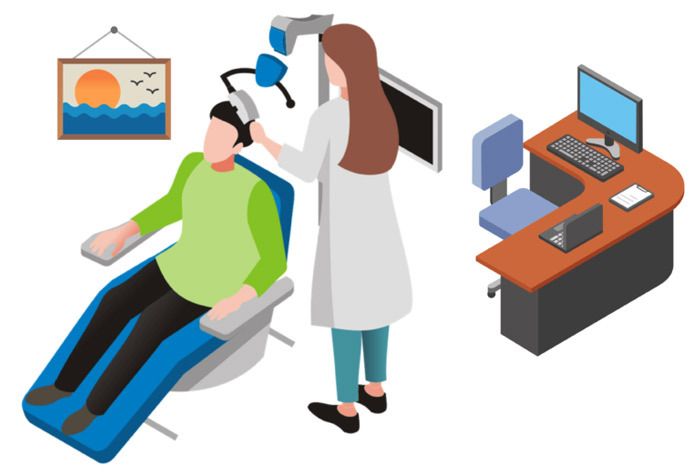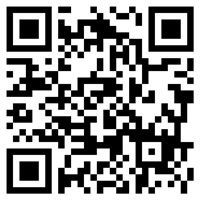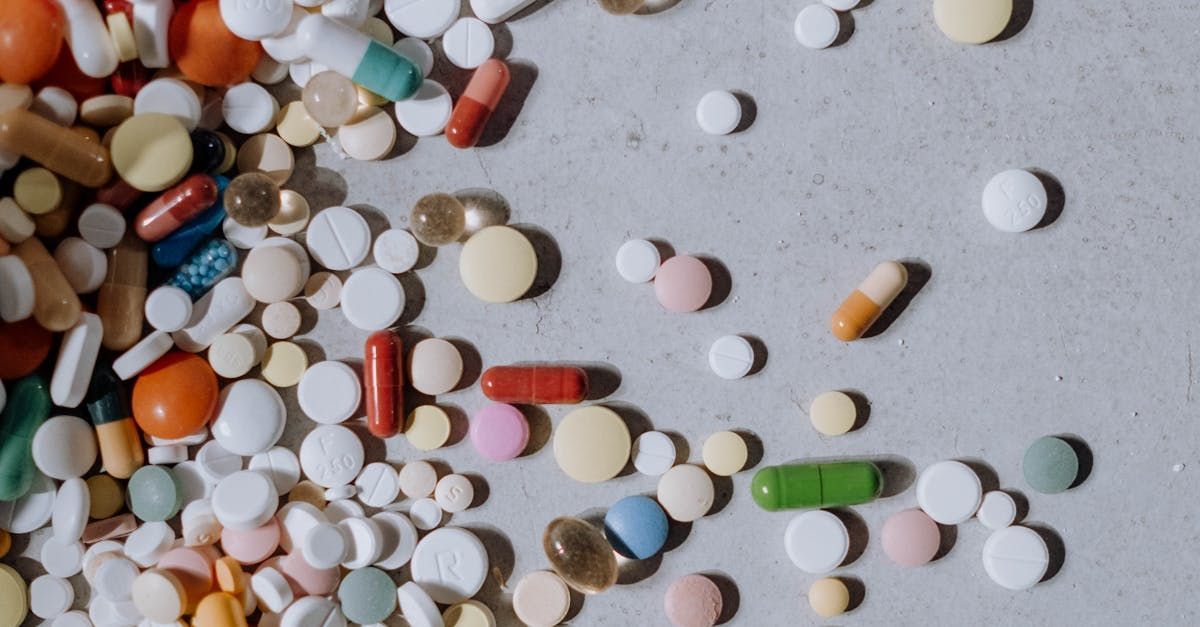425 OLD NEWMAN RD. STE 402 FRISCO, TX 75036
(469) 460-8809
Unlocking Hope: The Power of TMS Therapy for Depression
Introduction
Centrally located in Frisco Texas, Bukhari Psychiatric Services is leading the way in innovative techniques for mental health treatment. TMS therapy is used to treat various mental health disorders, including depression. The ongoing crisis of depression has led to some novel measures such as TMS therapy that are allowing new expectations and aspirations among numerous people. This article investigates TMS therapy details such as the advantages, effectiveness levels, and the influence it has on patients’ lives.
Understanding Depression and MDD
Depression isn’t just sadness, it’s a sickness that confounds people and, in its severe form, it bewitches their lives. Often the conventional methods of treatment include pharmacotherapy, psychotherapeutics, and talk therapy, but these don’t work for everyone. This is how TMS therapy shows up like a hope everlasting and has grown in popularity.
The Prevalence of Depression
The mental well-being disorder that is most widespread internationally is depression. Globally, there are over 264 million individuals who are diagnosed with depression according to the World Health Organization (World Health Organization, 2020). Additionally, based on data from the National Institute of Mental Health (NIMH), in 2017 an estimated 17.3 million adults suffered from at least one major depression episode in the United States alone (National Institute of Mental Health, 2019). Not only does it create emotional turmoil, but its effects are felt in one’s physical well-being, how much they can do in terms of work, and entire life quality as well.
Long-lasting melancholy, decreased interest in once pleasurable activities, alterations in dietary habits and sleeping routine, and trouble with concentration define depression. Additionally, numerous emotional and physical problems accompany this state, making it hard for people to perform properly at their workplaces or within their households. Moreover, depression also suffers from such public disapproval that causes silence around it leading to a worsened condition out of fear no one will understand what they are going through.
What is Transcranial Magnetic Stimulation TMS Therapy?
TMS stands for transcranial magnetic stimulation. TMS is the most advanced form of treatment for several mental health conditions, including depression. How does it work? Dr Rustin Berlow discusses the mechanism of action behind TMS and its current understanding in the brain stimulation research community. This type of therapy is especially helpful to those patients who have not been able to derive any benefit from the traditional medication, CBT, or talk therapy.
History and Development of TMS
In the 1980s, TMS therapy was just a diagnostic tool for neurological disorders at first. It wasn’t until the late 1990s and early 2000s that researchers began exploring its potential for treating depression. In 2008, the Food and Drug Administration (FDA) approved TMS therapy for the treatment of major depressive disorder (MDD) in patients who had not responded to one antidepressant medication at least (Food and Drug Administration, 2008). Since then, TMS has gained widespread acceptance as a valuable option for treatment-resistant depression.
TMS therapy, also called repetitive TMS or rTMS, involves the delivery of repeated magnetic pulses. There was what appeared to be an urgent requirement for better and less invasive methods of treating mental illnesses, which led to the inception of TMS. Early studies looked at whether it was safe or even practical to influence the brain’s activity through magnetism. As research continued, proof was gathered that TMS had healing abilities against depression, resulting in its endorsement by the FDA and utilization in medical settings afterward.
How TMS Therapy Works
TMS therapy is aimed at specific brain regions connected to mood management. It stimulates inactive neural connections in individuals dealing with depression through the administration of magnetic waves. This process takes place in an institutionalized environment and frequently demands several treatment sessions during a period of several weeks.

The Science Behind TMS
The brain consists of various regions that perform different functions. Some parts of the brain are less active in an individual with depression like the left dorsolateral prefrontal cortex (DLPFC). In this therapy type, TMS uses magnetic fields to produce electrical currents stimulating the inconsiderate sections of the brain hence improving mood regulation through enhancement of neuronal activity. Each TMS session takes about 30-40 minutes and patients usually have five treatments per week for four to six weeks. (George et al., 2010).
TMS involves using an electromagnetic device next to an individual’s head. The coil itself is known for its ability to produce magnetic waves that go through the skull and change into weak electric low-voltage currents in desired parts of the human brain. Such minor currents can influence cognitive processes which give opportunities for neurophysiological adaptation or restructuring some neural connections involved in mood control. With prolonged exposure to this method, one may expect a persistent reduction of depression symptoms. TMS theta burst stimulation is an advanced form of TMS that mimics natural brain rhythms and is as effective as standard TMS.
Benefits of TMS Therapy for Treatment Resistant Depression
- Non-Invasive: TMS does not require general anesthesia or lead to seizures like electroconvulsive therapy (ECT), making it a safer alternative for many patients. This means that TMS is a simple outpatient procedure or treatment!
- Minimal Side Effects: Mild headaches or scalp soreness may occur but typically last a short time.
- High Efficacy: TMS has been shown in studies to effectively reduce the signs of depression, with many patients falling into remission (O’Reardon et al., 2007).
- No Systemic Side Effects: Unlike drugs, TMS does not cause systemic side effects like weight increase or sexual impotence (Carpenter et al., 2019).
Comparing TMS with Other Treatments
The advantages of TMS treatment are clearly defined when compared to conventional remedies such as medicine and counseling. Although multiple people use drugs that help them, medicines possess numerous adverse effects and are not equally effective on everybody. Furthermore, psychotherapies demand commitment over a long time; hence they may not be helpful in certain instances. In contrast, TMS is considered a faster-acting and focused method with minimum side effects.
SSRIs and SNRIs are examples of depression medications that work effectively; however, they also have some side effects such as nausea, insomnia, or sexual dysfunctions in people who are taking them. Adverse effects may hinder patients from adhering to medication and this could result in less desirable results. Psychotherapy like CBT (cognitive-behavioral therapy) or IPT (interpersonal therapy), requires constant client engagement over several months before one can notice any significant difference. However, TMS delivers quicker alleviation with fewer adverse effects than most individuals would prefer.
Effectiveness of TMS Therapy
Multiple investigations have established that TMS therapy is effective. For example, a meta-analysis published in the Journal of Clinical Psychiatry found that TMS was significantly more effective than sham treatments in relieving depressive symptoms. (Carpenter et al., 2019). Additionally, TMS therapy has also been shown to effectively treat OCD symptoms.
Clinical Studies and Findings
- The study conducted by George: It revealed that repeated TMS sessions for a minimum duration of four to six weeks led to considerable improvement in depressive symptoms among those patients who were resistant to antidepressants (George et al., 2010).
- Holtzheimer and Mayberg: Their investigation suggested that TMS therapy could be an appropriate choice for patients with treatment-resistant depression, many of whom have found some relief from chronic suffering (Holtzheimer & Mayberg, 2011).
- O’Reardon: In this randomized controlled trial, it was found that TMS was more effective than sham treatment in reducing depressive symptoms with around 30% of the patients becoming symptom-free (O’Reardon et al., 2007).
- A study on obsessive-compulsive disorder (OCD): This study found that TMS is effective in improving symptoms of OCD. TMS, which is FDA-approved for OCD, can inhibit activity in the brain, thereby reducing OCD symptoms. The study also highlighted the off-label uses of TMS for OCD and its effectiveness compared to medication and psychotherapy.
TMS therapy’s long-term advantages are further investigated in subsequent studies. The study of Dunner et al. (2014) revealed that numerous patients who benefitted from the first course of TMS maintained their improvement for up to a year after treatment. This indicates that TMS can be responsible for temporary relief and permanence of recovery from depression.
Future Direction and Research
The field of TMS therapy is constantly changing and improving. The purpose of ongoing research is to fine-tune protocols, make them more effective, and find new mental health issues that TMS could help with.
Additionally, ongoing research aims to offer transcranial magnetic stimulation (TMS) for a wider range of mental health conditions.
Emerging Applications of Brain Stimulation Therapies
Other mental illnesses that researchers are investigating are the possibility of using TMS therapy to treat including anxiety, PTSD, and OCD. TMS therapy may ease anxiety symptoms by addressing conditions that often cause anxiety. Initial results from research have been good enough to indicate that TMS may one day become a flexible weapon in the mental health treatment arsenal. (Perera et al., 2016).
Advances in TMS technology are also being investigated. These include innovative coil designs that can precisely target specific brain regions, and personalized treatment programs that take advantage of neuroimaging data. TMS is not FDA-approved for bipolar disorder, and alternative treatments for bipolar depression are available. Such innovation could lead to better options for TMS therapy, which could reach many more patients who can benefit from it. Individuals should check with their health insurance company to determine coverage for TMS therapy.
TMS therapy can treat conditions such as depression, anxiety, and obsessive-compulsive disorder (OCD). Initial results from research have been good enough to indicate that TMS may one day become a flexible weapon in the mental health treatment arsenal. (Perera et al., 2016).
Conclusion
Transcranial Magnetic Stimulation therapy is indeed a breakthrough in the management of depressive disorders. At Bukhari Psychiatric Services, we are determined to make use of this unique technology to change people’s lives for the better. If you or someone dear to you is suffering from depression, TMS therapy might be worth looking into. We will be there every step of the way in your healing process and offer individualized treatment plans through our devoted team.
Are you local to Frisco Texas and struggle with depression medication side effects? We may be able to help! Call (469) 460-8809 or contact us for a TMS consultation today.
References
- Carpenter, L. L., et al. (2019). Transcranial magnetic stimulation (TMS) for major depression: A multisite, naturalistic, observational study of acute treatment outcomes in clinical practice. Journal of Clinical Psychiatry, 80(2), e1-e11.
- Dunner, D. L., et al. (2014). A multisite, naturalistic, observational study of transcranial magnetic stimulation for patients with pharmacoresistant major depressive disorder: Durability of benefit over a 1-year follow-up period. Journal of Clinical Psychiatry, 75(12), 1394-1401.
- Food and Drug Administration. (2008). FDA clears TMS therapy for the treatment of depression. Retrieved from https://www.fda.gov/news-events/press-announcements/fda-clears-tms-therapy-treatment-depression
- George, M. S., et al. (2010). Daily left prefrontal transcranial magnetic stimulation therapy for major depressive disorder: A sham-controlled randomized trial. Archives of General Psychiatry, 67(5), 507-516.
- Holtzheimer, P. E., & Mayberg, H. S. (2011). Stuck in a rut: Rethinking depression and its treatment. Trends in Neurosciences, 34(1), 1-9.
- National Institute of Mental Health. (2019). Major depression. Retrieved from https://www.nimh.nih.gov/health/statistics/major-depression
- O'Reardon, J. P., et al. (2007). Efficacy and safety of transcranial magnetic stimulation in the acute treatment of major depression: A multisite randomized controlled trial. Biological Psychiatry, 62(11), 1208-1216.
- Perera, T., et al. (2016). The Clinical TMS Society consensus review and treatment recommendations for TMS therapy for major depressive disorder. Brain Stimulation, 9(3), 336-346.
- World Health Organization. (2020). Depression. Retrieved from https://www.who.int/news-room/fact-sheets/detail/depression
Share Article

OUR RELATED ARTICLES
Click here to leave us a review or scan the QR Code shown:

CONTACT
425 OLD NEWMAN RD. STE 402 FRISCO, TX 75036
- Mon - Fri
- -
- Sat - Sun
- Closed
(817) 898-7402
info@bukharipsychiatricservices.com
MAIN LINKS
Click here to leave us a review or scan the QR Code below:

Click here to leave us a review or scan the QR Code above:
CONTACT
425 OLD NEWMAN RD. STE 402 FRISCO, TX 75036
(469) 460-8809
- Mon - Fri
- -
- Sat - Sun
- Closed
(817) 898-7402
MAIN SERVICES
Copyright Bukhari Psychiatric Services. All right reserved.







